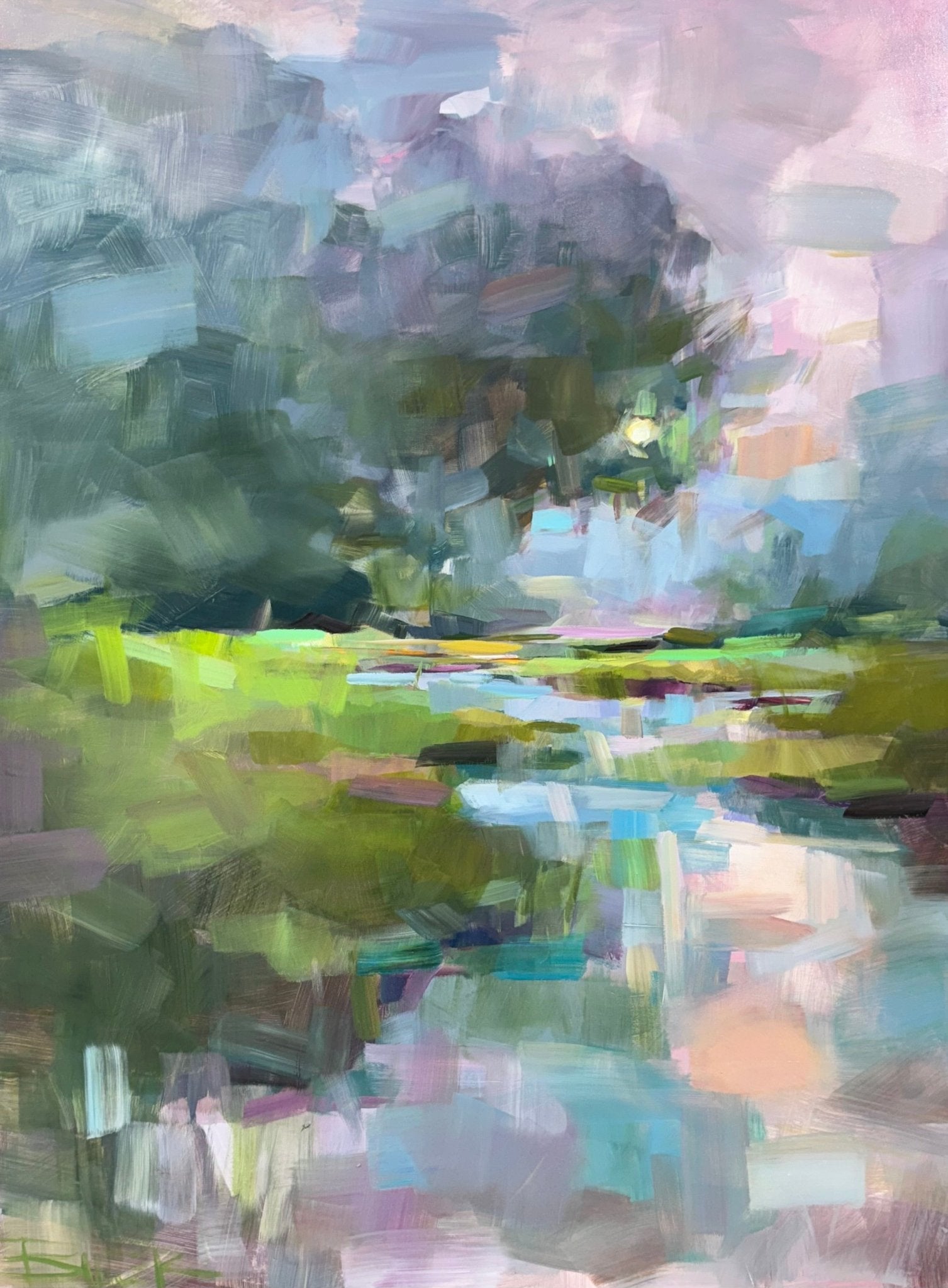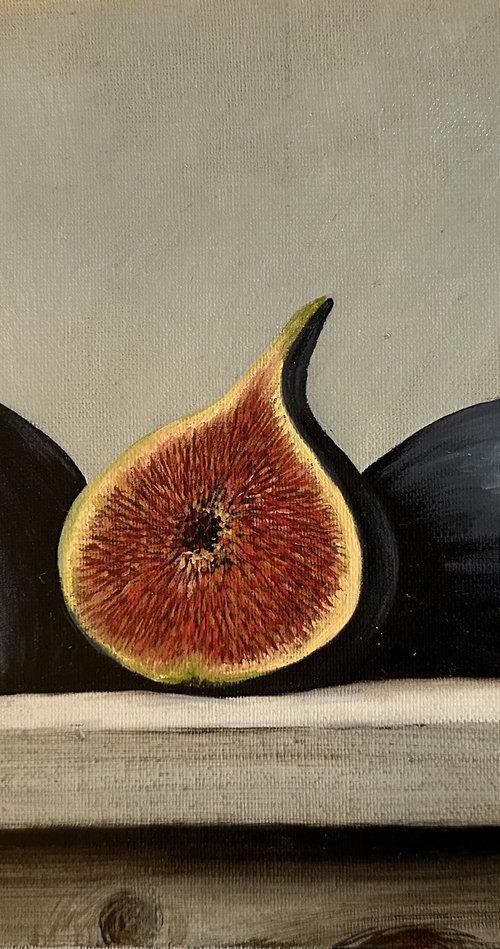Artist-Made Masterpieces: Oil Paintings for Sale by Creators
Artist-Made Masterpieces: Oil Paintings for Sale by Creators
Blog Article
Exploring Everything About Oil Paintings: A Guide to Understanding Their Beauty and Value
Oil paints have mesmerized audiences for centuries, using a look into the imaginative mastery of different eras. Their abundant history is intertwined with ingenious strategies and extensive emotional expression. Recognizing the materials and approaches behind these artworks can improve gratitude. Furthermore, the marketplace for oil paintings presents chances for investors and collectors alike. As one discovers this interesting world, the inquiry emerges: what makes an oil paint truly important?
The Background of Oil Painting: A Trip Through Time
Oil painting has origins that date back to ancient times, it truly flourished throughout the Renaissance, when musicians uncovered its convenience and abundant color possibility. Early examples can be mapped to the 7th century, with techniques advancing especially throughout cultures. The medium ended up being noticeable in Northern Europe in the 15th century, particularly via the jobs of musicians like Jan van Eyck, that spearheaded its usage for thorough realistic look and lively hues. This period noted a departure from tempera paints, enabling for greater deepness and texture. As oil paint spread, it influenced numerous artists, resulting in masterpieces by distinguished figures such as Leonardo da Vinci and Rembrandt. The medium's tradition proceeds, shaping the art globe well right into modern-day times.
Comprehending Oil Paints: Materials and Techniques
As musicians explore the world of oil paints, they encounter a varied selection of products and methods that define this tool. The main components of oil paint include pigments, which provide shade, and drying oils, such as linseed, that bind the pigments and help with application. Numerous ingredients can customize the paint's structure and drying time, improving flexibility. Strategies like glazing, where clear layers are accumulated, and impasto, which involves applying thick paint, enable different visual results. Additionally, making use of brushes, palette blades, and also fingers can create special textures and surfaces. Recognizing these materials and techniques enables artists to fully share their creativity and achieve the wanted impact in their art work.
The Role of Color in Oil Paintings
Color plays a critical function in oil paints, affecting both visual charm and psychological resonance. Understanding color concept essentials, including the connections in between hues, can enhance an artist's capacity to share state of mind and environment. In addition, mastering color mixing methods permits greater deepness and splendor in a painting's palette.

Color Concept Basics
Understanding color concept is vital for musicians dealing with oil paints, as it develops the foundation for creating aesthetically interesting and unified compositions. Shade theory encompasses the research of how shades connect, the shade wheel, and the connections in between primary, secondary, and tertiary colors. Artists make use of corresponding colors to boost contrasts and produce focal points, while analogous shades advertise unity and cohesiveness within an item. Additionally, the concepts of warm and awesome shades influence the perception of depth and room in a paint. Realizing these principles enables artists to control color efficiently, assisting the customer's eye and communicating their intended message. Mastery of shade concept ultimately enriches a musician's capability to share emotions and ideas via their job.
Emotional Effect of Shade
The psychological impact of shade in oil paints plays a vital role in exactly how customers connect and perceive with artwork. Shades evoke details sensations and state of minds, affecting the visitor's mood. For circumstances, cozy colors like oranges and reds can develop a sense of warmth and power, while awesome tones such as blues and environment-friendlies commonly stimulate calmness or self-contemplation. Artists purposefully select color combinations to boost narrative components, leading the audience's emotional trip. The saturation and contrast of shades even more intensify these results, attracting attention and producing focus. Eventually, the interplay of colors in oil paintings not just improves their aesthetic appeal yet also works as an effective tool for psychological expression, enhancing the visitor's experience and interpretation.
Color Mixing Techniques
While many elements of oil paint add to the general composition, mastering color mixing methods is vital for achieving desired effects and depth. Shade blending can be approached with numerous methods, consisting of the additive and subtractive processes. Additive mixing includes integrating shades of light, while subtractive blending relies upon pigments, where shades blend to develop brand-new shades. Artists frequently utilize a minimal palette to create harmonious works, comprehending the connections between main, secondary, and tertiary shades. Techniques such as glazing and scumbling better enhance depth and luminosity. By masterfully blending shades, a musician can evoke emotions, produce centerpieces, and achieve a sense of realistic look, eventually boosting the painting's visual and emotional influence.
Famous Oil Painters and Their Iconic Works

Famous for their proficiency of shade and strategy, oil painters have actually created some of one of the most popular art work in history. Popular musicians like Vincent van Gogh mesmerized target markets with his stirring brushwork in "Starry Evening," while Claude Monet's "Impression, Sunrise" prepared for Impressionism. Leonardo da Vinci's "Mona Lisa" remains an enduring sign of creative wizard, showcasing his skill in catching human expression. Rembrandt's "The Night Watch" illustrates his innovative use of light and shadow. Other remarkable figures include Pablo Picasso, that transformed contemporary art with his bold testing in jobs like "Les Demoiselles d'Avignon," and Georgia O'Keeffe, whose vibrant depictions of landscapes and blossoms helped specify American modernism. Each musician's unique design contributed greatly to the oil paint landscape.
How to Review the High Quality of an Oil Paint
Examining the quality of an oil paint includes a mindful assessment of craftsmanship techniques, along with an analysis of shade and composition. Observing brushwork, layering, and the application of paint can disclose the artist's skill level. Additionally, the interaction of shades and the overall setup of elements add substantially to the painting's aesthetic worth.
Examining Workmanship Strategies
A precise evaluation of workmanship techniques is necessary for figuring out the top quality of an oil painting. Evaluators need to first examine the application of paint; thick, textured brushstrokes may suggest a knowledgeable hand, while overly consistent applications can suggest a lack of deepness. oil paintings for sale. The layering technique is additionally important; the presence of lusters and differed thickness can improve luminosity and complexity. In addition, the quality of the products utilized, such as the canvas and pigments, plays a significant function in toughness and total aesthetic. Attention to information in aspects like edges and shifts in between shades mirrors the musician's dedication to their craft. Eventually, these techniques contribute to the paint's emotional influence and market value, offering as indications of the artist's skill and intent
Analyzing Shade and Composition
While reviewing the high quality of an oil paint, one must concentrate on the interplay of shade and make-up, as these aspects are essential to the art work's general impact. Shade options can establish and stimulate emotions state of mind; for that reason, the artist's scheme need to be checked out for harmony and comparison. A healthy structure directs the visitor's eye and develops a sense of unity. Artists frequently employ strategies like the guideline of thirds or leading lines to boost aesthetic passion. Furthermore, using light and shadow can include depth, boosting the three-dimensionality of the paint. Eventually, a successful oil paint marries shade and composition, engaging the viewer and inviting a much deeper recognition of the artist's vision and technique.
Caring for and Preserving Oil Paintings
Correct care and preservation of oil paints is necessary for preserving their stability and long life. To shield these art work, it is essential to present them far from straight sunshine, which can cause fading and discoloration. Preserving a steady setting with regulated temperature and moisture further help in stopping damages. Cleaning ought to be done gently utilizing a soft, completely dry cloth, staying clear of any severe chemicals that could harm the paint or varnish. Regular assessments for indications of deterioration, such as flaking or breaking, are a good idea. When storing or delivering oil paintings, proper cushioning and framework are essential to avoid physical injury. Eventually, thorough treatment adds to the visual appeal and value of oil paints over time.
The Market for Oil Paintings: Accumulating and Spending
Understanding the market dynamics for oil paintings is important for collection agencies and investors alike. The worth of these artworks is influenced by various variables, including the artist's track record, historic significance, and current fads. Collection agencies commonly look for pieces that resonate personally while thinking about potential admiration in worth. Auctions and galleries function as main places for acquiring and selling, with rates rising and fall based upon need and rarity. Purchasing oil paintings calls for study into the market, along with an understanding of credibility and provenance. In addition, arising artists may supply chances for substantial returns, while established names can command high rates. On the whole, click here a strategic approach to accumulating can generate both visual satisfaction and economic incentives.

Often Asked Questions
What Are the Environmental Influences of Oil Paint Products?
The environmental influences of oil paint products consist of the launch of volatile natural compounds (VOCs), unsafe waste generation, and resource extraction for pigments. These elements add to pollution and eco-friendly destruction, raising worries among eco aware artists and customers.
Exactly How Do Various Canvases Impact Oil Paint Outcomes?
Different canvases affect oil paint results considerably. Texture, surface, and absorbency quality can change paint application, drying out times, and color vibrancy. Musicians typically select particular canvases to accomplish wanted effects and improve their imaginative expression.
Can Oil Paintings Be Recovered if Harmed?
If harmed, Oil paintings can undoubtedly be brought back. Expert conservators utilize different strategies to repair tears, tidy surface areas, and address staining, ensuring that the artwork preserves its initial appeal and worth for future generations.
What Are the Indicators of an Initial Oil Paint?
The indicators of an initial oil paint include noticeable brush strokes, structure variations, and an uneven canvas weave (oil paintings for sale). Furthermore, credibility might be confirmed via provenance, signatures, and the presence of a varnish layer one-of-a-kind to oil mediums
Exactly How Has Technology Influenced Modern Oil Paint Techniques?
Technology has actually considerably influenced contemporary oil painting techniques by introducing digital tools for planning, improved products for structure and longevity, and on-line platforms for sharing and offering art, therefore broadening artists' innovative possibilities and audience reach. Oil paint has roots that date back to old times, it really prospered throughout the Renaissance, when musicians uncovered its convenience and rich color possibility. The psychological effect of shade in oil paints plays a crucial function in just how customers connect and perceive with art work. While several aspects of oil painting add to the total composition, grasping shade blending strategies is vital for attaining preferred results and depth. Examining the high quality of an oil painting entails a cautious assessment of workmanship methods, as well as an evaluation of color and composition. While reviewing the high quality of an oil painting, one have to focus on the interaction of color and make-up, as these aspects are basic to the art work's overall impact.
Report this page